James A. Duke, Ph.D.
See book keywords and concepts |
 Some herbalists I respect even suggest taping a sliver of garlic onto bad patches of athlete's foot. This might work better than many of the commercial treatments, but I see a problem here, as walking around with garlic between your toes could raise some eyebrows—and alert some nostrils. You could always try this approach just for the duration of the afternoon ball game on TV, provided you're not expecting any company.
One note of caution: If you try this whole-garlic approach and it seems to irritate your skin, discontinue use and switch back to using either a garlic footbath or garlic oil. Some herbalists I respect even suggest taping a sliver of garlic onto bad patches of athlete's foot. This might work better than many of the commercial treatments, but I see a problem here, as walking around with garlic between your toes could raise some eyebrows—and alert some nostrils. You could always try this approach just for the duration of the afternoon ball game on TV, provided you're not expecting any company.
One note of caution: If you try this whole-garlic approach and it seems to irritate your skin, discontinue use and switch back to using either a garlic footbath or garlic oil. |
Ruth Winter, M.S.
See book keywords and concepts |
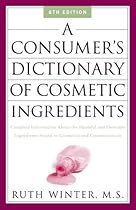 The root contains various glycosides (see) including estrogenic substances and tannins. herbalists have used it to relieve nerve pains, menstrual pains, and the pain of childbirth. Also used to speed delivery and to reduce blood pressure. Black cohosh is also believed to have sedative properties. In 1992, the FDA proposed a ban on black cohosh in oral menstrual drug products because it had not been shown to be safe and effective as claimed. CINCHONA EXTRACT • The extract of the bark of various species of Cinchona cultivated in Java, India, and South American. Quinine is derived from it. The root contains various glycosides (see) including estrogenic substances and tannins. herbalists have used it to relieve nerve pains, menstrual pains, and the pain of childbirth. Also used to speed delivery and to reduce blood pressure. Black cohosh is also believed to have sedative properties. In 1992, the FDA proposed a ban on black cohosh in oral menstrual drug products because it had not been shown to be safe and effective as claimed. CINCHONA EXTRACT • The extract of the bark of various species of Cinchona cultivated in Java, India, and South American. Quinine is derived from it. |
Textbook of Natural Medicine 2nd Edition Volume 1Michael T. Murray, ND
See book keywords and concepts |
| The Russians have a separate history of eleuthero and even go as far as saying, despite a long history of use by Chinese herbalists (references date back to 2,000 BC), that "Eleutherococcus was not known in Oriental folk medicine".1 The Russian history of eleuthero begins in 1855 when a pair of Russian scientists, C. I. Maximovich and L. I. Shrenk, traveled from St Petersburg to the Ussuri region of Russia on the Amur river. It was in this area that Maximovich observed a vast thicket of unusual
Table 83. |
Ruth Winter, M.S.
See book keywords and concepts |
 Used in a douche, herbalists say it helps relieve vaginal discharge. Toxic in large doses, it can cause severe diarrhea and violent vomiting and may affect the heart. BARIUM HYDROXIDE • See Barium Sulfate.
BARIUM SULFATE • Blanc Fixe. The salt of the alkaline earth metal, it is a fine, white, odorless, tasteless powder used as a white coloring and as a base for depilatories and other cosmetics. Barium hydroxide is also used in a similar manner. The barium products are poisonous when ingested and frequently cause skin reactions when applied. Used in a douche, herbalists say it helps relieve vaginal discharge. Toxic in large doses, it can cause severe diarrhea and violent vomiting and may affect the heart. BARIUM HYDROXIDE • See Barium Sulfate.
BARIUM SULFATE • Blanc Fixe. The salt of the alkaline earth metal, it is a fine, white, odorless, tasteless powder used as a white coloring and as a base for depilatories and other cosmetics. Barium hydroxide is also used in a similar manner. The barium products are poisonous when ingested and frequently cause skin reactions when applied. |
James A. Duke, Ph.D.
See book keywords and concepts |
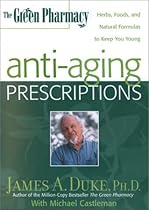 Chasteberry is quite popular among European medical herbalists and American naturopathic physicians. It's also one of my favorite herbs. Buy a commercial preparation and use it according to the label directions.
DONG QUAl (angelica sinensis). Andrew Weil, M.D., a noted advocate of alternative therapies, describes dong quai as "female ginseng." He says that the herb does an excellent job of relieving hot flashes and other menopausal discomforts when taken in combination with chaste-berry and damiana. Chasteberry is quite popular among European medical herbalists and American naturopathic physicians. It's also one of my favorite herbs. Buy a commercial preparation and use it according to the label directions.
DONG QUAl (angelica sinensis). Andrew Weil, M.D., a noted advocate of alternative therapies, describes dong quai as "female ginseng." He says that the herb does an excellent job of relieving hot flashes and other menopausal discomforts when taken in combination with chaste-berry and damiana. |
Berkeley Holistic Health Center and Shepherd Bliss
See book keywords and concepts |
| The most controversial of the English herbalists during the Golden Age was Nicholas Culpeper, a physician who incurred the wrath of the Royal College of Physicians by publishing an unauthorized translation of the Latin Pharmacopeia in an attempt to demystify the medicine of that era.
Culpeper popularized the doctrine of signatures, which put forth the belief that certain parts of a plant might resemble some part of the human body in form or color. The healing properties of each herb were indicated by its shape, texture, or manner of growing in relation to the part of the body it resembled. |
J. E. Williams, O.M.D.
See book keywords and concepts |
 Lomatium (Lomatium dissectum): This herb received considerable attention as an antiviral in the mid-1980s, but has since fallen out of favor except among the most avid herbalists. It grows in the Western United States and is a member of the carrot family (Umbelliferae), and during the spring when the shoots are tender, it can be eaten. The root is the medicinal part and contains tetronic acids, luteolin, and resins.
It has not been studied to any degree. Lomatium (Lomatium dissectum): This herb received considerable attention as an antiviral in the mid-1980s, but has since fallen out of favor except among the most avid herbalists. It grows in the Western United States and is a member of the carrot family (Umbelliferae), and during the spring when the shoots are tender, it can be eaten. The root is the medicinal part and contains tetronic acids, luteolin, and resins.
It has not been studied to any degree. |
James F. Balch, M.D.
See book keywords and concepts |
 But herbalists everywhere have agreed to call it a bilberry. It grows in many parts of Europe, but in North America it is limited to the mountains of British Columbia, Alberta, and south along the Rockies to Colorado.
World War ll Royal Air Force Pilots used Bilberry Jam for Night vision
In World War II, the pilots of the Royal Air Force would eat bilberry jam on their bread before flying a night mission because they believed that it would improve their night vision. When the war was over, that prompted research that confirmed in 1964 that they were right.
What Is In Bilberry? But herbalists everywhere have agreed to call it a bilberry. It grows in many parts of Europe, but in North America it is limited to the mountains of British Columbia, Alberta, and south along the Rockies to Colorado.
World War ll Royal Air Force Pilots used Bilberry Jam for Night vision
In World War II, the pilots of the Royal Air Force would eat bilberry jam on their bread before flying a night mission because they believed that it would improve their night vision. When the war was over, that prompted research that confirmed in 1964 that they were right.
What Is In Bilberry? |
Michael Tierra, L.Ac, O.M.D.
See book keywords and concepts |
 The diagnostic systems of TCM were not all created at the same time but evolved over centuries, refined in critical debates among highly revered Chinese herbalists. The diagnostic systems of TCM were not all created at the same time but evolved over centuries, refined in critical debates among highly revered Chinese herbalists. |
| Another reason that traditional herbalists from around the world tend to espouse such a simple program for recovery is that it creates a nutritional program that will not neutralize or compromise the effects of the herbs that are given. In fact, it will optimize their effects, because with the grains and beans representing neutral balance, the herbs will be more strongly yin or yang and thus able to effect change more quickly.
WHITE OR BROWN RICE?
Unpolished grains, such as whole, organic brown rice, are the richest in nutrition and fiber. |
| While herbalists prefer to first use foods and then herbs for medicine, practitioners of all traditions have historically felt compelled to reach beyond their countries' boundaries to employ a variety of herbs and treatments that may even extend beyond the realm of the vegetable kingdom to include substances from the animal and mineral kingdoms as well. It is not surprising, then, that the materia medica of our European ancestors resembled that of the Chinese materia medica, using a variety of strange animal parts, insects, and minerals, as well as herbs. |
| Typically, herbalists prescribe oily, mucilaginous substances, such as oils, demulcent and mucilaginous herbs, and yin tonics. |
| Cinnabar should be used only when dispensed by qualified Chinese herbalists.
Magnetitum (CI SHI)
Common Name: Magnetitum
Energy and Flavors: Cold; spicy, salty
Organ Meridians Affected: Kidneys, liver, lung, heart
Effects and Indications: Calms and sedates the spirit, calms the liver and lowers rising liver yang, helps the kidneys grasp lung qi. It is used for insomnia, restlessness, tremors, convulsions, irritability, dizziness, vertigo, tinnitus, and blurred eyesight. It is also used to treat asthma caused by kidney deficiency. |
| For this reason, Western herbalists use cayenne pepper, either taken internally or applied topically, for bleeding and hemorrhage. Tian qi ginseng (Radix notoginseng), one of the most powerful trauma herbs, is used for both internal and external injuries with associated bruising, clots, and hemorrhage. It is also one of the most effective herbs for dissolving blood clots. For trauma and first aid, one of the best forms of ginseng to use, Tian qi ginseng, is in the Chinese patented formula Yunnan Paiyao.
For severe hemorrhage, hemostatic herbs and substances are indicated. |
Michael Tierra
See book keywords and concepts |
 Negative effects occur only when one fails to observe the cautions that herbalists have recognized after many years of experience.
Essential Oils
All essential oils are very concentrated substances that are irritating in large doses. Externally, one should avoid contact with the eyes, nose, mouth and all mucous membranes. Many of the essential oils are rubefacients intended to cause a mild irritation reaction to stimulate circulation in the area. If applied to the skin in large amounts they may cause a burning irritation. Negative effects occur only when one fails to observe the cautions that herbalists have recognized after many years of experience.
Essential Oils
All essential oils are very concentrated substances that are irritating in large doses. Externally, one should avoid contact with the eyes, nose, mouth and all mucous membranes. Many of the essential oils are rubefacients intended to cause a mild irritation reaction to stimulate circulation in the area. If applied to the skin in large amounts they may cause a burning irritation. |
| Christopher and hundreds of herbalists and doctors before him.
Lobelia is one of the best herbs to use as an emetic and can be useful during the height of an asthmatic attack. The best method I have found is to use acid tincture of lobelia made with apple-cider vinegar. Begin by drinking a large volume of lukewarm mint tea and follow by taking one teaspoon of lobelia tincture every ten minutes for three or four times or until emesis ensues. The lobelia will promote vomiting and leave the body perfectly relaxed. |
| Peony is widely used in Traditional Chinese herbal medicine and was formerly in use by Western herbalists as a major remedy for chorea, epilepsy (TCM, internal liver wind), and childhood convulsions. It is also effective for spasmodic coughs and whooping cough. Wild peony is also used as an emmenagogic circulatory stimulant. |
| This is in contrast to Western herbalists who, coming from a tradition of excess meat eating and the use of rich foods, advocate a more eliminative approach to health.
Since the herbs discussed here are among the most frequently used in Chinese medicine, 1 would like to suggest some approaches for the novice in beginning to integrate them into his health regime.
First we should classify the herbs according to their tonic capacities. |
Gary Null
See book keywords and concepts |
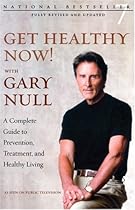 I learned about several herbalists, and studied with Letha Hadady over the years. I took several workshops with her, where I learned about Chinese herbs and the whole philosophy of Asian medicine as well as the Ayurvedic and the Tibetan systems. Over the years, I have taken formulas of Chinese and Western herbs.
The results are difficult to show concretely. All I can tell you is that I don't have cancer and that 10 years later, after having had a very aggressive kind of tumor, I am still fine.
I believe in natural medicine. I learned about several herbalists, and studied with Letha Hadady over the years. I took several workshops with her, where I learned about Chinese herbs and the whole philosophy of Asian medicine as well as the Ayurvedic and the Tibetan systems. Over the years, I have taken formulas of Chinese and Western herbs.
The results are difficult to show concretely. All I can tell you is that I don't have cancer and that 10 years later, after having had a very aggressive kind of tumor, I am still fine.
I believe in natural medicine. |
Michael Tierra
See book keywords and concepts |
 Carotenoids other than beta-carotene include canthax-anthin, phytoene, lutein, xanathophylls, and lycopenes, many of which, according to herbalist Donny Yance of the American Herbalists' Guild (AHG), may offer greater anticarcinogenic effects than does beta-carotene. He further states that carotenoids have antioxidant properties, protecting phagocytes, lipids, and cells against oxidation, strengthening the immune system, increasing the production of certain interleukins, and—with their special effect on the skin—protect against cancer-causing sun damage. Carotenoids other than beta-carotene include canthax-anthin, phytoene, lutein, xanathophylls, and lycopenes, many of which, according to herbalist Donny Yance of the American Herbalists' Guild (AHG), may offer greater anticarcinogenic effects than does beta-carotene. He further states that carotenoids have antioxidant properties, protecting phagocytes, lipids, and cells against oxidation, strengthening the immune system, increasing the production of certain interleukins, and—with their special effect on the skin—protect against cancer-causing sun damage. |
Ruth Winter, M.S.
See book keywords and concepts |
 Celery seed is used by herbalists as a diuretic, blood cleanser, and to treat arthritis. It is used in "organic" cosmetics. Celery seed may cause a sensitivity to light, and some people are allergic to it.
CELLULAR MEMBRANE COMPLEX • A fluid in the shaft that binds the hair. The difference between coarse and fine hair has a physiochemical basis: All hairs have a tough, shell-like casing (the cuticle) and a soft, fibrous inner cortex. In coarse hair, the cuticle makes up 10 percent of the volume and the cortex 90 percent. In fine hair, the proportion is 40 percent cuticle and 60 percent cortex. Celery seed is used by herbalists as a diuretic, blood cleanser, and to treat arthritis. It is used in "organic" cosmetics. Celery seed may cause a sensitivity to light, and some people are allergic to it.
CELLULAR MEMBRANE COMPLEX • A fluid in the shaft that binds the hair. The difference between coarse and fine hair has a physiochemical basis: All hairs have a tough, shell-like casing (the cuticle) and a soft, fibrous inner cortex. In coarse hair, the cuticle makes up 10 percent of the volume and the cortex 90 percent. In fine hair, the proportion is 40 percent cuticle and 60 percent cortex. |
Andrew Chevallier
See book keywords and concepts |
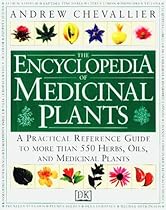 Unlike much conventional medical practice, which focuses on eradicating the "bug" or abnormal condition, herbal medicine has a more balanced approach, seeking to treat the weakness that gave rise to ill health, and setting this in the context of the patient's life as a whole. herbalists identify a variety of factors behind the onset of illness. While bodily signs and symptoms are the most important indicators (and sometimes the only significant ones), dietary, emotional, and even spiritual factors are also taken into account. Unlike much conventional medical practice, which focuses on eradicating the "bug" or abnormal condition, herbal medicine has a more balanced approach, seeking to treat the weakness that gave rise to ill health, and setting this in the context of the patient's life as a whole. herbalists identify a variety of factors behind the onset of illness. While bodily signs and symptoms are the most important indicators (and sometimes the only significant ones), dietary, emotional, and even spiritual factors are also taken into account. |
| Medical herbalists, however, believe that this is only part of the picture. While illnesses such as cholera and typhoid are highly infectious and are indeed likely to be caught by almost anyone, many infectious diseases are not transmitted automatically from one person to another. The question arises, therefore, what weakness within the patient has allowed the "seed" of infection to find fertile ground? |
| Alongside conventional Western physicians, there are medically trained Ayurvedic practitioners, traditional Ayurvedic practitioners, healers and herbalists, and homeopaths.
Changing Attitudes
Perhaps the most important factor behind the growing interest in complementary medicine is the poor state of health in Western societies. Conventional medicine has by and large brought serious infectious diseases under control, although there are worrying signs that infectious organisms are becoming resistant to antibiotic treatment, largely as a result of their indiscriminate use. |
| Some doctors prescribe herbal medicine, but traditional herbalists, curanderos, still practice. They learn by apprenticeship, gathering herbs from the wild and preparing their own medicines.
How the European Union will manage to legislate the safe practice of each of these three types of herbalism remains to be seen, but each has a significant contribution to make in a future in which people are free to choose the treatment that accords with their ideas and wishes.
John Gerard's 1597 Herball is one of the classic texts on healing plants.
Dried feverfew.
Hawthorn
(Crataegus oxyacantha, p. |
| In Britain, concerns such as these, combined with a desire to establish Western herbal medicine as an alternative to conventional practices, particularly in the industrial cities of the North of England, led to the formation in 1864 of the National Institute of Medical herbalists, the first professional body of herbal practitioners in the world. Its history is an example of how tenacious herbal practitioners have had to be simply to retain their right to give safe, gentle, and effective herbal medicines to their patients. |
| Even in urban areas conventional health care services can be limited and in this situation, traditional providers of care, such as spiritualists, herbalists, and midwives, are the main source of treatment available for the majority of the population. The World Health Organization aims to achieve a level of health care by the year 2000 that will permit all people to lead socially and economically productive lives. In an attempt to meet this, African countries have pioneered training traditional medical practitioners in simple medical techniques and basic hygiene procedures. |
Christian Ratsch
See book keywords and concepts |
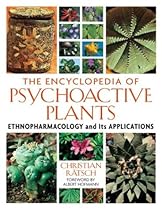 Detlef Rustler
Alte Chirugie [Ancient Surgery] (i99i» 77)
Soporific Sponge
Other Names
Spongia somnifera
In ancient times, herbalists and physicians searched for anesthetic agents that could be used during operations and in the treatment of wounds. Numerous psychoactive plants and their products were used in antiquity to anesthetize patients, including Cannabis indica, Cannabis sativa, Conium maculatum, Hyoscyamus albus, Hyoscyamus muticus, Mandragora officinarum, and
Papaver somniferum (Grover 1965; Rtister 1991 77 f. Detlef Rustler
Alte Chirugie [Ancient Surgery] (i99i» 77)
Soporific Sponge
Other Names
Spongia somnifera
In ancient times, herbalists and physicians searched for anesthetic agents that could be used during operations and in the treatment of wounds. Numerous psychoactive plants and their products were used in antiquity to anesthetize patients, including Cannabis indica, Cannabis sativa, Conium maculatum, Hyoscyamus albus, Hyoscyamus muticus, Mandragora officinarum, and
Papaver somniferum (Grover 1965; Rtister 1991 77 f. |
Jean Carper
See book keywords and concepts |
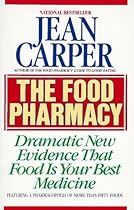 In Minneapolis the white tree fungus, pei-mo-er, is promoted by some Chinese herbalists as a prophylactic after a heart attack. And A Barefoot Doctor's Manual recommends mo-er for dysmenorrhea, difficulties menstruating.
Dr. Hammerschmidt had a good time writing up his case for the New England Journal of Medicine. In Minneapolis the white tree fungus, pei-mo-er, is promoted by some Chinese herbalists as a prophylactic after a heart attack. And A Barefoot Doctor's Manual recommends mo-er for dysmenorrhea, difficulties menstruating.
Dr. Hammerschmidt had a good time writing up his case for the New England Journal of Medicine. |
Schuyler W. Lininger, Jr. DC
See book keywords and concepts |
 Traditional Chinese herbalists used a tea made from chickweed for nosebleeds.
Active Constituents
The active constituents in chickweed are largely unknown. It contains relatively high amounts of vitamins and flavonoids, which may explain some of its activity. Although some older information suggests a possible benefit for chickweed in rheumatic conditions, this has not been validated in clinical studies.2
How Much Is Usually Taken? Traditional Chinese herbalists used a tea made from chickweed for nosebleeds.
Active Constituents
The active constituents in chickweed are largely unknown. It contains relatively high amounts of vitamins and flavonoids, which may explain some of its activity. Although some older information suggests a possible benefit for chickweed in rheumatic conditions, this has not been validated in clinical studies.2
How Much Is Usually Taken? |












